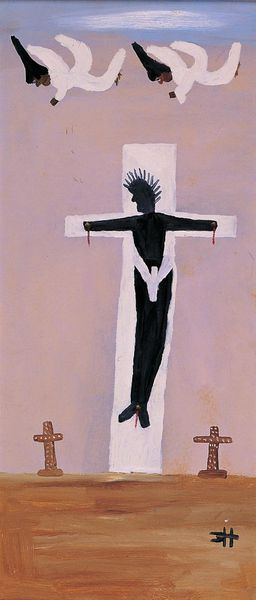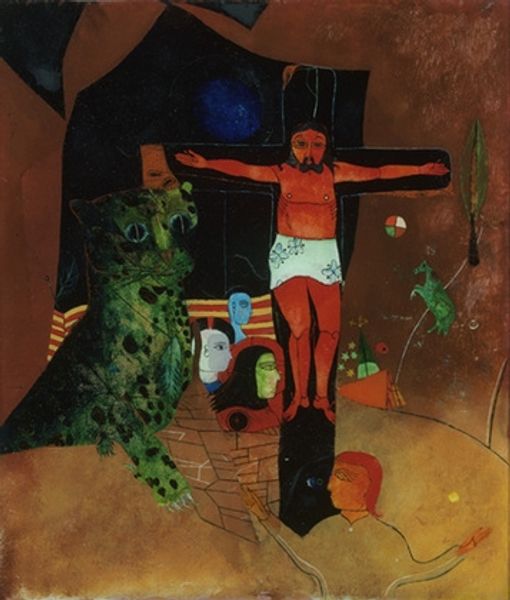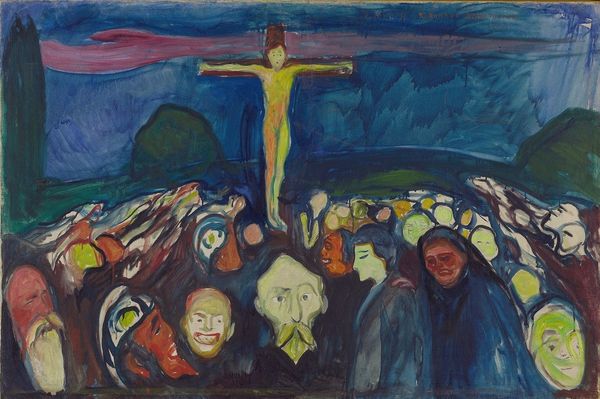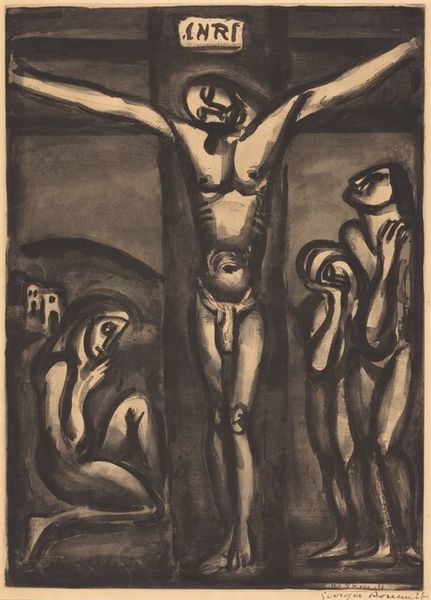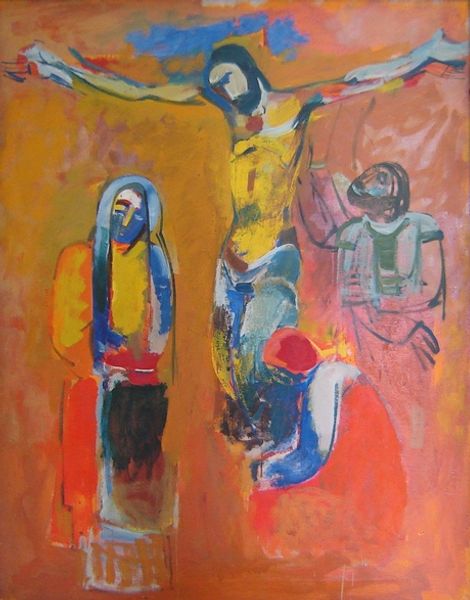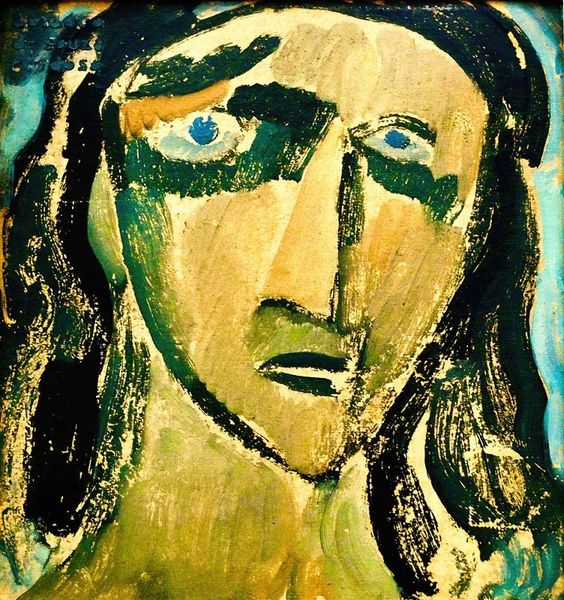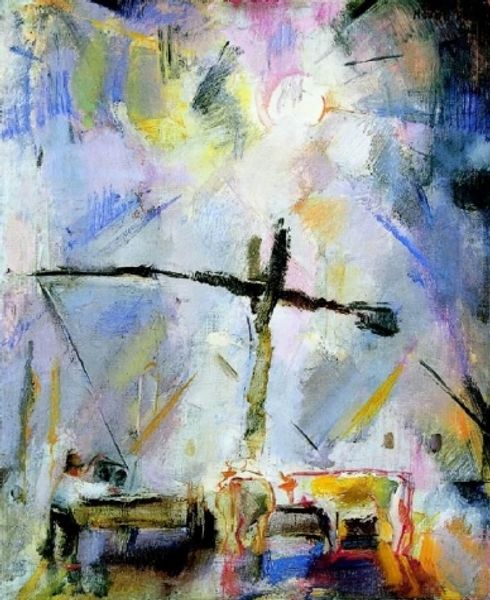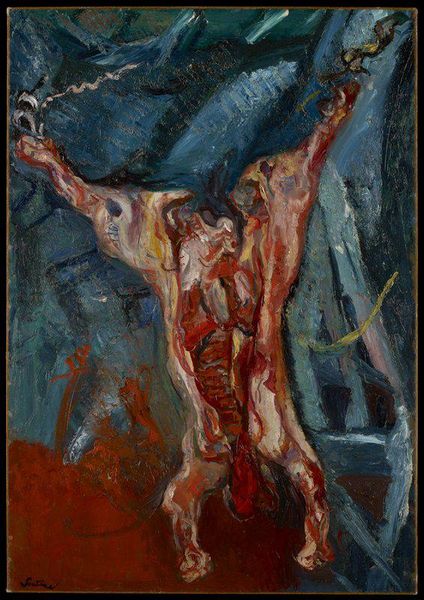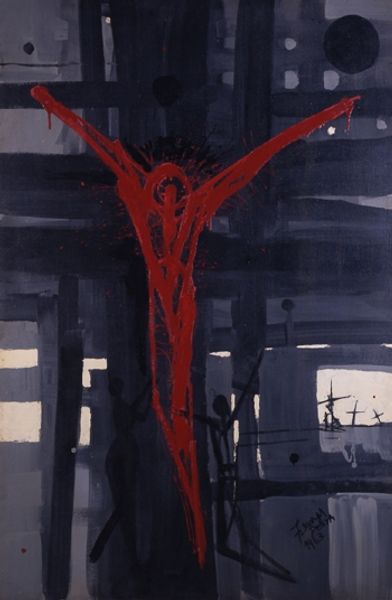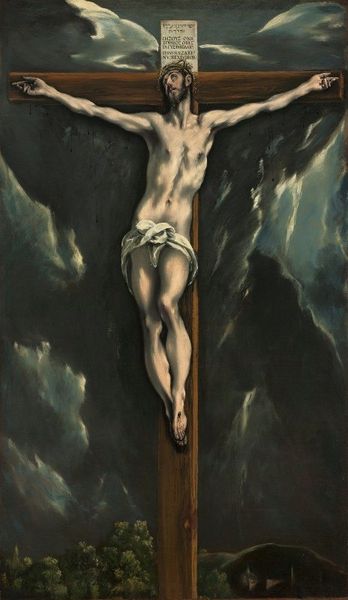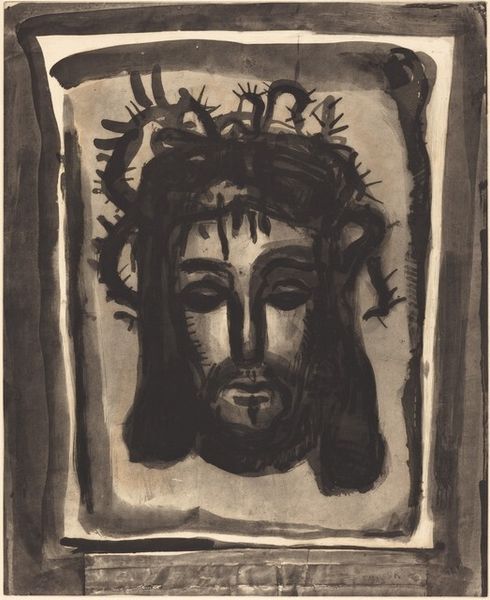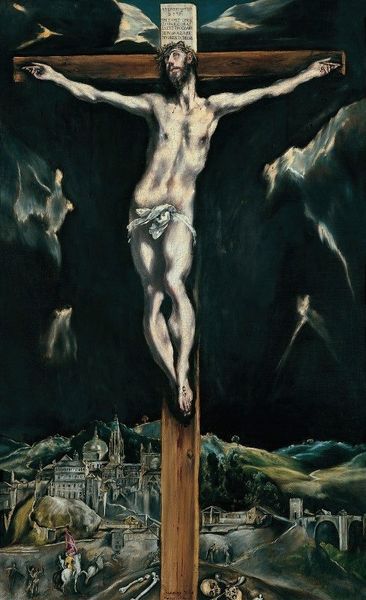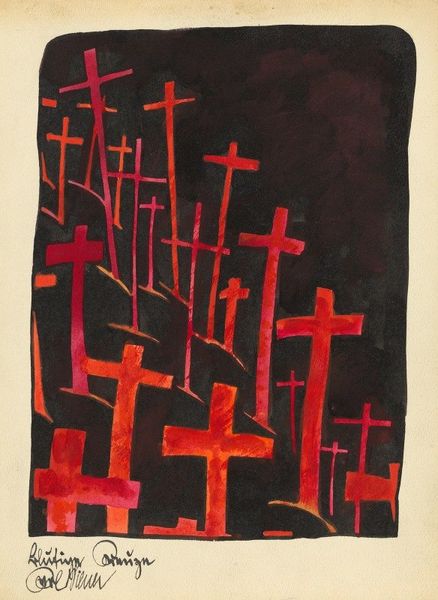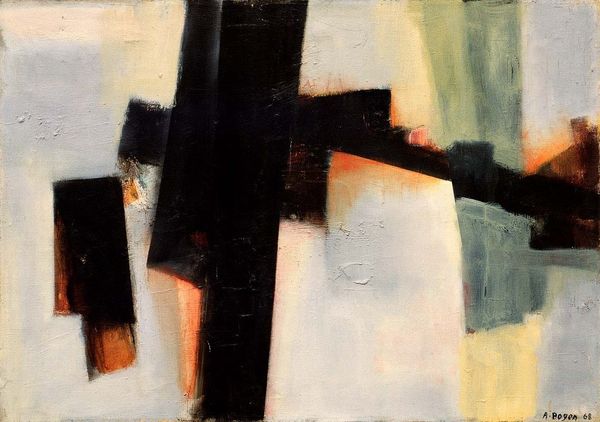
Copyright: Public Domain: Artvee
Curator: Wassily Kandinsky's 1911 painting, "Gekreuzigter Christus"—Crucified Christ, that is—is arresting, wouldn’t you say? The way the colors vibrate...it feels less like a religious icon and more like an explosion of pure emotion. Editor: An explosion, yes, but with a deep historical resonance. Kandinsky painted this at a time of immense social upheaval, anxieties about industrialization and the changing spiritual landscape of Europe were rising. It reflects that very palpably. Curator: It's true; the cross itself, in its stark blackness, dominates the canvas, almost oppressive. Yet, look at the figures swirling around the base—are they angels? Mourners? They seem caught in a whirlwind of grief and awe, painted in these soft blues and greens, contrasting so fiercely with the black. The little figure down there...what do you make of him? Editor: He is, for me, a vital clue. Positioned precariously beneath the crucified figure, this seemingly innocuous form challenges traditional iconography. The figure evokes those excluded and marginalized. Remember Kandinsky's context – burgeoning Expressionism – was intimately engaged with social critique. Curator: I like that reading. To me, his expressionist brushwork—thick, almost crude—seems like he’s deliberately stripping away the romanticized vision of religious suffering. It's raw, painful, but somehow... hopeful, maybe. What do you think accounts for that luminosity, do you think, apart from the yellow of that figure? Editor: The strategic deployment of light across the painting isn't accidental. Kandinsky’s radical embrace of abstraction invites us to renegotiate our relationship to spiritual narratives and collective traumas. This Christus isn’t passively suffering; his agony precipitates a confrontation with power. Curator: A confrontation made even more urgent by its incompleteness. You know, looking at the original, you really get a sense of how brave this composition is. It seems so resolved but equally raw, so exposed in a strange sense. I come away pondering the weight of personal faith versus societal despair, you know? Editor: Absolutely. Kandinsky provokes us to dissect inherited visual grammars, inspiring dialogues about justice, power, and liberation beyond the walls of faith. It invites us all to partake and renegotiate not just the historical moment captured here, but to become co-creators of history still in motion.
Comments
No comments
Be the first to comment and join the conversation on the ultimate creative platform.

